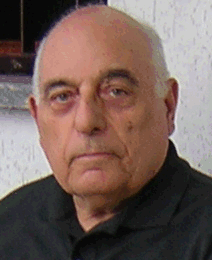



Analysis of objectives:
Towards a conceptual unification of exising approaches to structural analysis,
including aspects of application in engineering and mathematical theory aspects
-
Evolution of structural theories
The modern theory of structures starts since Galileo Galilei, who investigated the behaviour of a framed beam with static load on the free extremity, focusing on the internal states of tension.
Subsequently, scholars of great talent (such as Bernoulli, De St. Venant and others) have introduced axioms to develop (not without errors) the analysis of beams under static loads, which was still considered the main issue to be addressed, and have introduced deformations as factors to be calculated. During the 19th century, Italian scholars (Clapeyron, Menabrea, Castigliano) have introduced considerations regarding work, which can all be reconducted to the principle of virtual work. A first extension of the domain of investigation addresses bidimensional structures, using axioms similar to those used for beams.
The development of mathematical physics allowed to address, amongst other things, the tridimensional theory of structures, both form a static and a dynamic point of view, focussing on structures of any shape, and the related boundary conditions. The main interest in this context concerned linear problems, including shape invariance under load, and the relations between displacements and deformations, as well as between deformations and stresses. Tensorial calculus was than developed almost independently from potential applications, but was subsequently used in studies of great importance in other fields, for example both general and restricted relativity, and further became a fundamental instrument for the theory of structures, allowing non linear approaches to the investigation of deformations under load and of the relations between displacements and deformations. For approximately one century, structural analysis has developed on the basis of the emerging applications, using the instruments which progressively became available. In particular, the most advanced structural problems, such as behaviours involving plastic deformations, the impact of meteorites on structures and multiple breaks due to mechanical and thermal loads, have necessitated great advances in the theory of structures.
In order to present a non exhaustive overview, sufficient though to explain the breadth and depth of recent structural analysis, it is necessary to introduce, in addition to those already mentioned, some further topics, such as asymptotic approaches to the analysis of bidimensional and monodimensional structures and multilayered anisotropic plates.
In the above context, scientific contributions have been provided by the author on the following: application of perturbation methods to the synthesis of eigenvalues of vibrations and eigenvalues in phenomena of static stability limits; problems due to geometric non linearities in elasticity; and finally, dynamic of elastic systems with time-dependent boundaries, where it is fundamental to recognise in each continuum dynamic phenomenon the resultant of wave progation (in monodimensional systems this propoperty is hidden in prosthaferesis formulas), thus allowing to investigate wave reflections on contours. Multiple breaks due to mechanical and thermal loads is a problem encountered in space activities, leading to the need of studying what happens when a physical body, and in particular a space vehicle, enters the atmoshpere at the speed typical of space missions. In particular, it is interesting to determine the statistic distribution of the resulting pieces based on their mass and on the dimensions of the involved ground area.
Asymptotic approaches, as defined by Cicala, are of fundamental importance, due to their impact on future developments of scientific analysis and their practical applications. When searching for approximate solutions, such approaches have the advantage that they do not impose a level of approximation and do not require axioms regarding the solutions, they terminate through a sequence of steps of increasing approximation in which each step can be considered as asymptotically coherent, since the internal and the external behaviour can are approximated following a unified process. Perturbation methods which establish a link between eingevalues of vibration problems and eingenvalues in phenomena of static stability limits are suggested and supported by the fundamental properties of systems of strongly elliptical linear equations. In fact, they possess eingenvalues which mainly depend on higher-order derivation terms, and in a given structure vibration problems and static stability problems give rise to mathematical models which differ only for terms of derivation order lower than the maximum. The dynamic of elastic systems with time-dependent boundaries is more sophisticated than that of systems with ambiguous boundary conditions, because an exchange of energy occurs between structures and constraints. In general, the problem can be addressed by taking into account the essentially propagational nature (waves) of each conitnuum dynamics phenomenon. By studying the refelction of each wave component at the boundary, when this also has a time dependent location, it is possible to solve the problem for limear mathematical models.